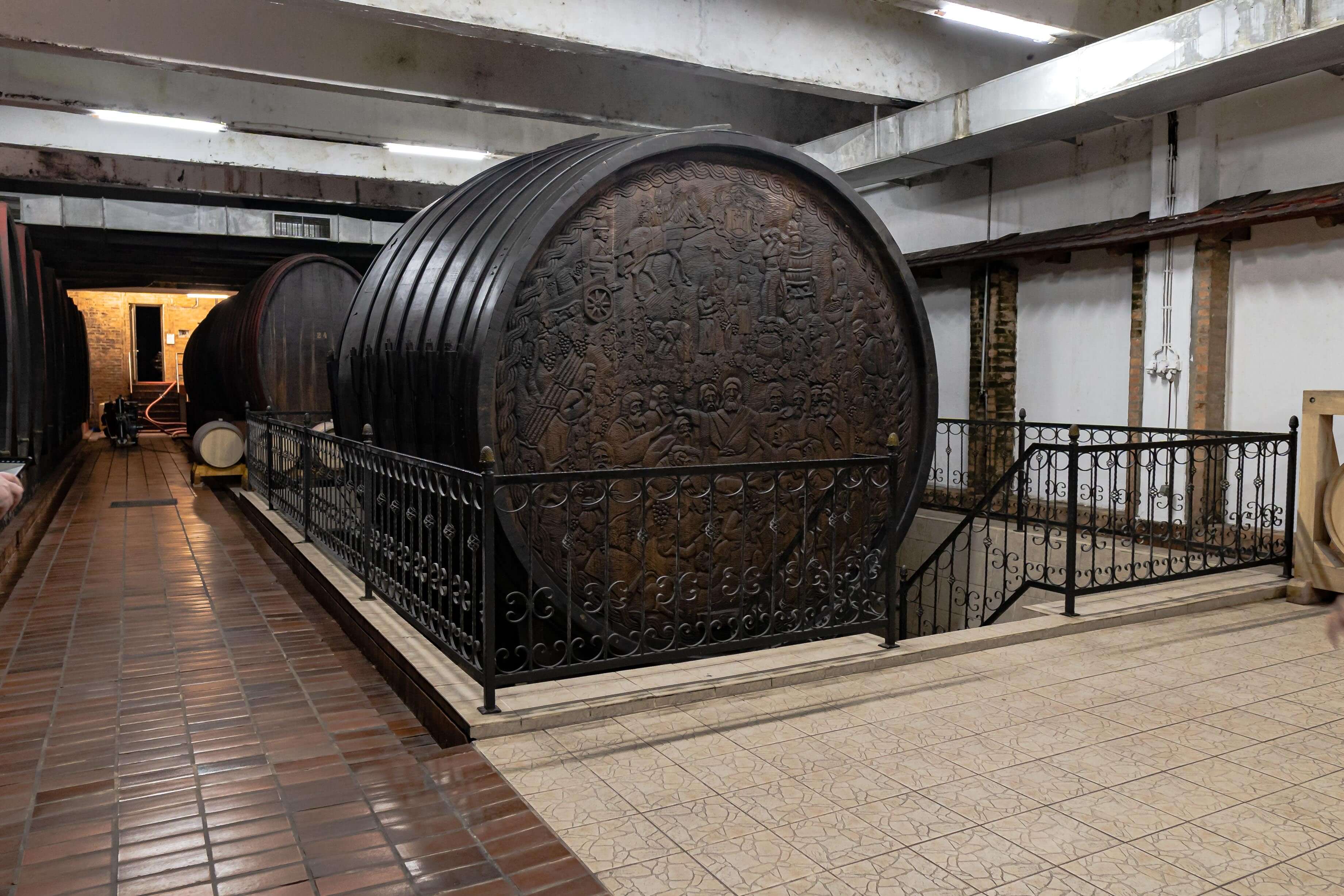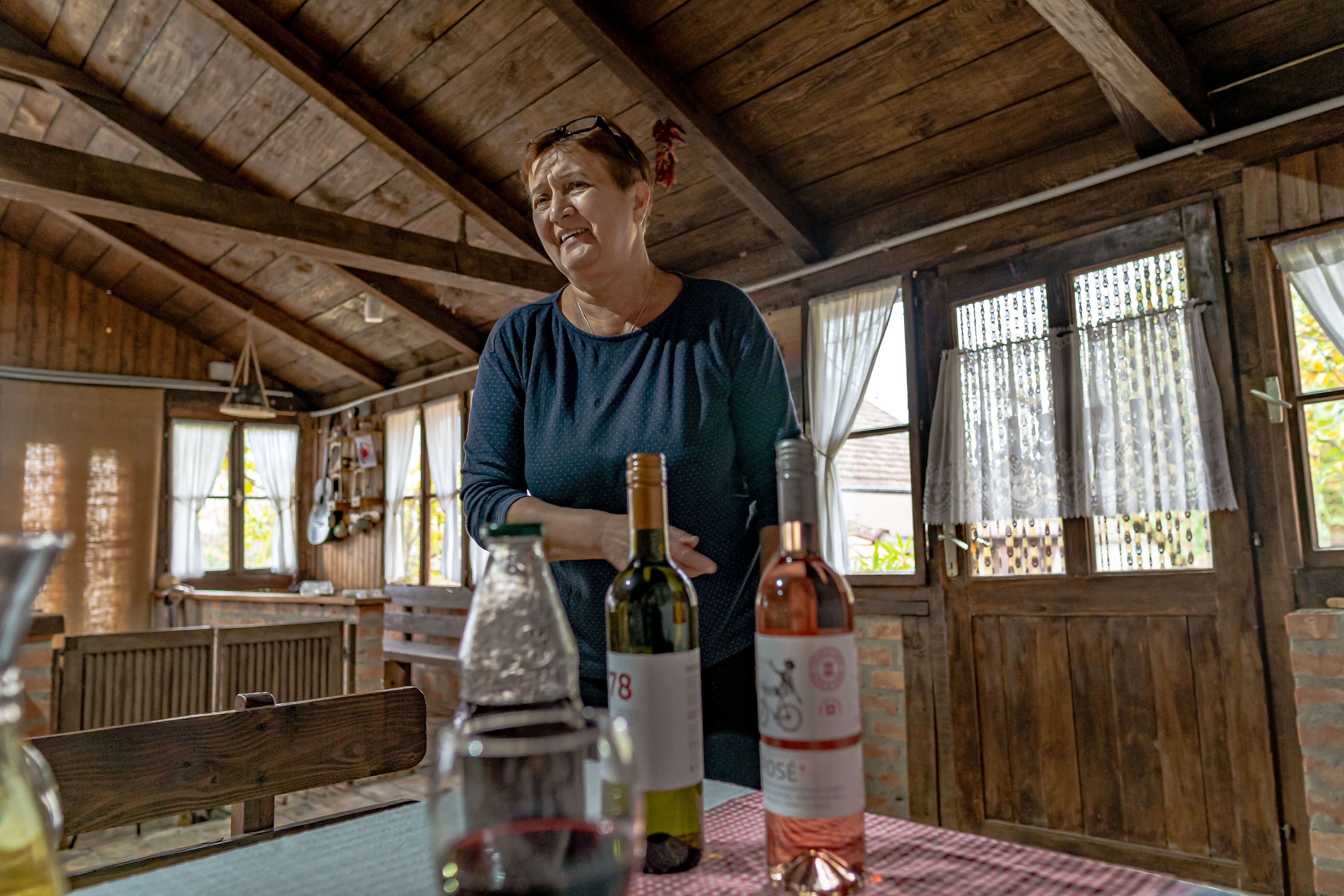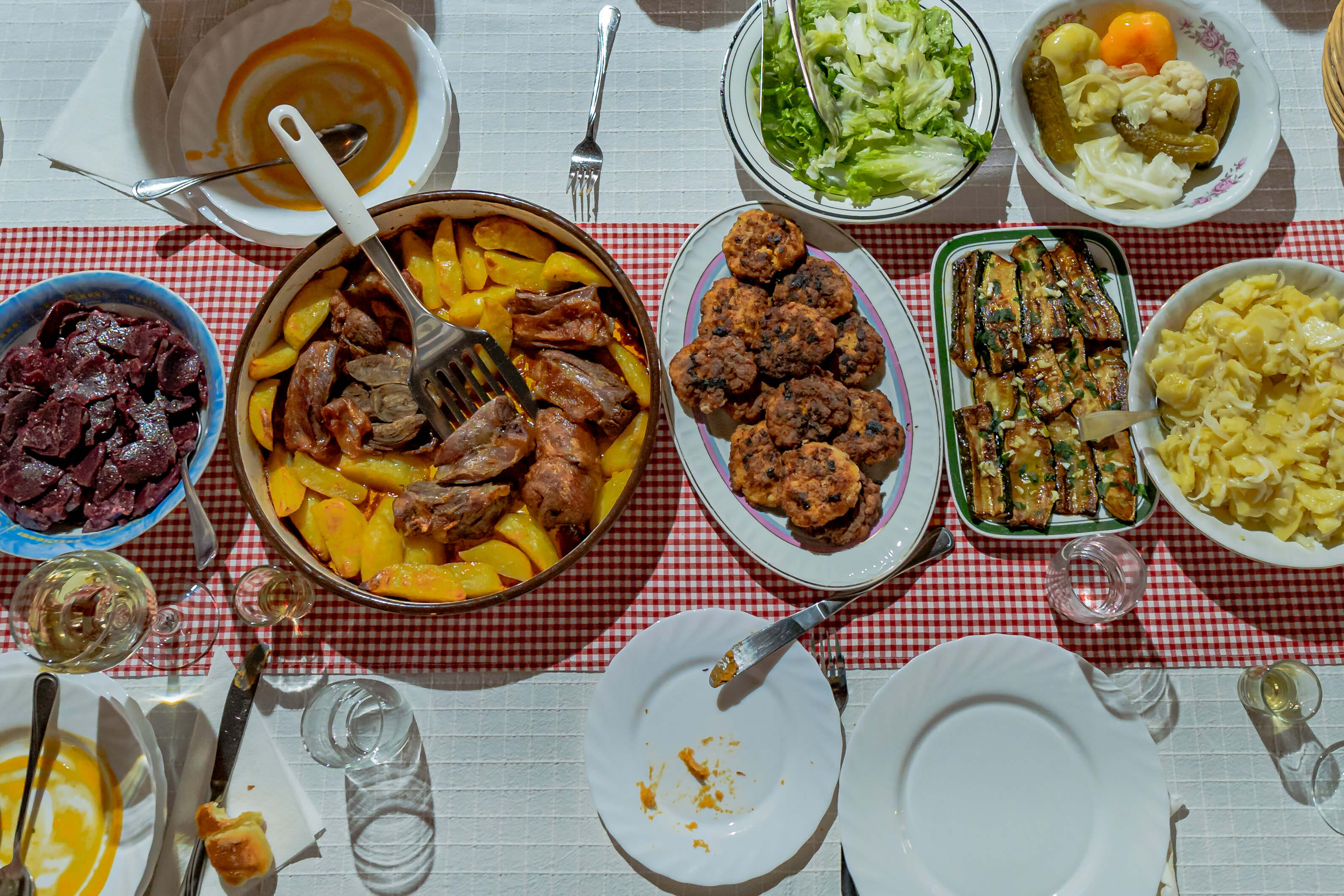More and More Foreign Workers in Croatia, Where are They From?
September the 8th, 2022 - There are more and more foreign workers in Croatia, but where do they come from and what sort of work do they typically take up?
As Poslovni Dnevnik writes, given the fact that Croats have been leaving the country for years to try to find better opportunities, more stability and the chance to comfortably make ends meet, the laboyr market in Croatia has been (as expected) seriously disrupted and burdened by a severe lack of labour for some time now. According to the statistics of the Croatian Employment Service (CES), among the most sought-after professions for which a positive opinion was issued in the period from January to August 2022, are precisely those related to construction.
The most work permits for foreign workers have been issued for the following trades: construction workers (6,476), followed by masons (5,194), civil engineering workers (3,359), carpenters (3,299), locksmiths (2,265), welders (2,231), facade workers (2,161), electricians ( 1,727) and installers of building elements (1,645). The Ministry of the Interior (MUP) confirmed for the Baustela.hr portal that an increase in the number of residence and work permits has been observed in recent years. Back in 2019, 72,523 such permits were issued, in 2020, 66,655, and in the last year, this number increased to 81,995 permits for foreign workers.
This year, and only until July the 31st, 77,205 permits for foreign workers were issued. Of these, 48,167 were for new employment, 14,294 were permit extensions, and 14,744 were for seasonal employment. This means that in the last three months alone, 25,689 foreign workers requested such permits.
In addition, according to the data currently available to the Ministry of Interior, and regarding the citizenships of foreigners who were issued residence and work permits, the largest number this year was issued to citizens of: Bosnia and Herzegovina (23,799), Serbia (13,764), Macedonia (7,468), Nepal (7,141) and Kosovo (5,407). Regarding the activities in which foreign nationals are mostly employed in in Croatia, construction is the leader (29,702), followed by catering, hospitality and tourism (26,211), industry (9,467), transport and communications (3,765), and agriculture and fishing (1,678).
From the data they received from the Ministry of the Interior, regarding the extended permits, there is a huge numerical difference between the activities. A massive 8,517 were extended in construction, while 1,138 were extended in catering, hospitality and tourism, and only 355 were extended in trade.
For more, make sure to check out our dedicated business section.
Dubrovnik Hosts Digitalisation in Healthcare, Health Tourism Conference
September the 8th, 2022 - The City of Dubrovnik hosted a recent conference on digitalisation in healthcare, and the potential of health tourism.
As Morski writes, the global health and wellness tourism market is worth more than 900 billion US dollars and is the fastest growing segment of tourism with annual growth of 15 to 20 percent. Croatia can do more in this than it does currently, and this was among the main messages from this week's conference "Digitalisation in healthcare and the potential of health tourism 365'', held in Dubrovnik.
The conference was organised by the Dubrovnik County Chamber of Commerce, bringing together experts from the fields of digitisation, innovation, healthcare and tourism.
The global data on the value of that market presented at the conference are actually estimates by the World Tourism Organisation (UNWTO), according to which the largest part of the total estimated value of the global market, or about 800 billion dollars, refers to wellness, while the value of health tourism is estimated to stand at about 125 billion dollars.
With regard to the growing market value, which also stimulates the increase in demand for healthcare and wellness tourism services, as well as the growing life expectancy of the world's population, it was pointed out at the conference that these are opportunities for further development of that market, including right here in Croatia.
The global report on the health and medical tourism market confirms that there are opportunities for growth and predicts that revenues in this market will grow by 30 percent annually from 2021 to 2026, and everything was additionally accelerated by the global coronavirus pandemic, which resulted in a significantly increased interest in healthcare and wellness tourism. Croatia also has a great opportunity due to its natural benefits, professional staff and excellent offer.
What it lacks, and what is happening more and more in the world, is that this growing demand is accompanied by increased investments in healthcare infrastructure, which in recent years also includes significant investments in the areas of digital transformation and innovation, robotics and artificial intelligence. Nevertheless, the European Centre for Digitisation and Innovation in Healthcare was established right here in the Republic of Croatia, which provides strong support to the business sector in the segment of project application support, research, testing, and the marketing of new products and services, and therefore this centre is designated as a possible reference point for the development of that sector.
The participants of the Dubrovnik conference agreed that Croatia has the potential for developing digital processes, including the digital transformation of the healthcare system, but with the assumption that speeding up all administrative processes is paramount. Croatia is a very attractive destination, it is especially strong in the fields of dental, aesthetic surgery and ophthalmology. In addition, work can be done to attract significant investments in this segment of the tourist offer and the clear marketing communication of Croatia as a destination for year-round health tourism, which would begin to solve the problems of seasonality.
For more, make sure to check out our dedicated lifestyle section.
Croatia Among Three EU Countries With Fastest Company Loan Growth
September the 7th, 2022 - Croatia is among three EU member states (the other two being the Republic of Ireland and Romania) with the fastest growth of loans being granted to companies.
As Poslovni Dnevnik/Ana Blaskovic writes, this year, specifically from February onwards, a strong growth in lending has been noticeable, and after a long period of stagnation (or in some cases decline), Croatia has once again entered a period in which loans being granted to companies outnumber those being given to households, the Croatian Association of Banks pointed out in its HUB Pregledi publication.
They noted that the annual loan growth back during the month of May this year actually exceeded the double-digit threshold for the first time and has since continued its upward trajectory.
"According to the latest data for the month of July, when the amount of net loans exceeded 100 billion kuna for the first time in eight entire years, growth stood at 16.1 percent. Along with Ireland and Romania, Croatia is among the three EU member states with the fastest growth in loans provided to companies in July," they stated from the Association of Banks.
Some assessments consider it unfounded that behind the generous lending of companies there is only the motivation to finance old loans while there is still a period of historically low money prices ahead of the announced tightening of monetary policy.
"It's well known that the European Central Bank started increasing interest rates back in July 2022, which will continue with the aim of suppressing inflation, but bearing in mind the expected increase in interest rates in the next year, it's only logical that some companies are trying to contract more favourable financing conditions in the long term. However, it is a question of net credit growth, i.e. an increase in credit activity on top of usual refinancing,'' they pointed out, adding that more active loan support is correlated with economic growth, which stood at an encouraging seven percent in the first quarter and accelerated to 7.7 percent in the second.
During this year, companies operating in Croatia primarily wanted to get their hands on business loans. In July, their growth reached as much as 21.5 percent on an annual basis. Loans for investments also grew at a double-digit rate, 12 percent, while other loans to companies increased by 6.1 percent.
From the Croatian National Bank (CNB), as was written back at the beginning of this summer, they see part of the reason for the unprecedented corporate demand in the increased needs of companies operating in the energy sector due to the huge explosion of costs. In July, loan demand was led by large companies in Croatia with 20.4 percent growth. They were followed by micro companies with 15.3 percent, medium-sized companies with 8.8 percent and small enterprises with 7.4 percent. Regarding loans for investments, the order is similar; the fastest growth was recorded in the large ones by 27.1 percent, and in the smallest ones by 15.2 percent.
"As such, Croatia has once again entered a period in which loans to companies grow faster than loans to households do. Such a relationship for a period of more than four months was last recorded back in 2016," HUB notec.
In addition to the economy, household lending also grew, albeit more slowly, by 5.2 percent during the month of July. The Association of Banks added that lending to the economy exceeds inflation, but the same is not true for people and household loans. The rate of increase in household loans in Croatia still remains below inflation, as does the growth of nominal wages (7.5 percent in July), resulting in the continuation of the decline in (real) indebtedness of that segment. At the same time, housing loans are growing at a rate of 9.4 percent, and cash loans are growing at a rate of 2.8 percent.
"This means that the contribution of loans to the financing of current consumption is minimal. Moreover, credit card loans are on the decline, and overdrafts on current accounts and other loans to households, although they recorded growth during this year, are at lower levels than the average for the period from 2018 to 2020," HUB stated. They also added that the different rate of growth of deposits and loans should be weighed up since deposits have been strongly accelerating since 2020 with expectations of a continuation of the trend after the tourist season and ahead of the conversion to the euro on the first day of 2023.
For more, make sure to check out our dedicated politics and business sections.
Croatian Calculator for Electricity Price Comparison Now a Reality
September the 7th, 2022 - Inflation is spiralling, and electricity prices are continuing on their upward trajectory. As such, the first Croatian calculator for working out and comparing the prices of electricity is now a reality, thanks to the Croatian Energy Market Operator (HROTE).
As Poslovni Dnevnik writes, customers from the category of households and businesses with an expected annual consumption of less than 100,000 kilowatt-hours can use this new and informative tool for comparing the offers of electricity suppliers' models and tariffs, prepared by the Croatian Energy Market Operator (HROTE).
This new Croatian calculator is an independent information tool which readily provides its users with an insight into updated information received from suppliers. It enables the comparison of offers on the entire retail electricity market up to the update date indicated in the tool, with clear and objective criteria shown, HROTE announced on Tuesday.
In order to make the offers comparable, the display does not include discounts and other benefits that suppliers may offer to users. This new Croatian calculator for electricity price comparison is fully adapted for use by people with disabilities, and it also has an easy to use procedure for reporting incorrect information about published offers, in accordance with the provisions of the Electricity Market Act.
It can be found by clicking here.
After entering the required data on the electricity consumption of the household or company, the approximate amounts that the household or company would pay to an individual supplier on both an annual and monthly level are displayed.
For more, make sure to check out our dedicated Made in Croatia section.
Croatian Complaints: What do Foreign Visitors Moan About the Most?
September the 7th, 2022 - When it comes to Croatian complaints, what precisely do foreign visitors to these shores moan the most about? Judging from a lot of what we've seen, the biggest complaints tourists have about the country are... other tourists.
As Poslovni Dnevnik writes, other tourists seem to bother tourists visiting Croatia more than much else does. Many visitors regret the times when visitors bypassed Croatia and instead simply went to Spain and Italy and Croatia remained somewhat of a secret to the crowds. Crowding bothers many tourists, and they also complain about bus and ferry transportation. But apart from criticism, there is also a lot of praise - primarily because of this country's utterly beautiful nature.
"Croatia used to be a cheap, niche destination because people mostly flocked to Spain and Italy. Now there are hordes and hordes of tourists everywhere you look. The ferry tickets sell early. Airbnbs and hotels are full. Tourist traps are everywhere - they'll charge you 50 kuna for a basic bottle of water. You can't even get an Uber. Long queues lead to each ticket office. All places, from restaurants to attractions, are full of tourists, and moving through the rivers of tourists on the steps is just awful.
I also don't understand why transportation is so confusing here, despite Croatia being a tourist hotspot. The ferry timetable is confusing. There are about four different operators with different opening hours. The ticket booths aren't easy to find because Google doesn't show them. When you try to buy tickets online, it says tickets are unavailable without explaining why, but when you get to the box office, you can buy tickets without a problem.
And yes, it's ironic that I'm complaining that the place is as touristy when I myself am tourist, but if I'd known all that, I wouldn't have come to Croatia," said a disappointed visitor on Reddit, who was advised by other forum members not to travel during the busiest times or to choose quieter destinations because Croatia has a long enough coast where everyone can find somewhere to their liking.
When it comes to other Croatian complaints, we move inland. One visitor to the stunning Plitvice National Park had a lot to say about the crowds. Crowds in the country's most visited national park during September, while there is still a solid number of tourists all over Croatia enjoying the lower temperatures.
"Plitvice National Park in Croatia was a disappointment. I expected less crowds on a Monday morning in September (not peak season, not a weekend). The reality: a park that is absolutely packed with hyperactive, selfish, bickering visitors. At one point I was trapped on the path and desperately tried to squeeze through the crowd to see the waterfalls," says a tourist who said he was told to visit Krka instead of Plitvice if crowds were an issue, as reported by punkufer.
It isn't all just Croatian complaints, however, and on the list of things that delight tourists is the beautiful nature and architecture, as well as the fact that, due to the low crime rate, you can walk freely even at night, without fear of being robbed. There are low prices and the generally friendly people are also a plus.
For more, make sure to check out our dedicated travel section.
Tourist Spending Great, But Croatian Energy Bills Soaring
September the 7th, 2022 - Tourist spending has been excellent so far, but with Croatian energy bills soaring just like across the rest of Europe, it's difficult to say just how much cash businesses have actually managed to pocket.
As Morski writes, it doesn't take a rocket scientist to work out that year's summer tourist season will definitely surpass all previous ones in terms of revenue earned, primarily due to higher prices caused by inflation, but what about energy and food prices?
Due to there never having been so many concerts held at the Pula Arena before, the number of daily visitors to this historic structure was only slightly less than back during the record year of 2019. However, this wasn't felt in terms of consumption, not even in the souvenir shop, where people still spent a decent amount.
''Things weren't expensive, just 22 kuna, it's fine,'' says Renie from the Netherlands, who bought a small ceramic souvenir from the famous Istrian city.
''This year, we generated income in the souvenir shop of 1,660,000 kuna, last year it was around a million, and even that is a 4 percent increase when compared to 2019, which means that people have had deeper pockets, people are spending money as if there's no tomorrow,'' said Darko Komso, director of the Archaeological Museum of Istria.
The terraces of Pula's restaurants and cafes are still full, and it seems that main season is still going on.
''The prices are fine, they're not too expensive, about the same as in Poland,'' says Camil, a guest from Poland. Even some Americans, who have been travelling in Croatia for several weeks now, have no objections to anything except payment methods. ''The only thing is that in Split we had to pay for everything in cash, and here we can pay by card everywhere, which is much more convenient for us,'' says Dean.
There is no doubt that there has been truly excellent consumption, but restaurateurs are still worried about energy and food prices as Croatian energy bills continue to soar.
Consumption was growing even back during the pre-season, and according to the Chamber's data, 30 percent more bills were issued in Istria, and their value was 80 percent higher, and back then there was no inflation and higher prices. In Fazana, they say that the demand for fish dishes has never been better.
''It's definitely been the best so far, even better than the record year of 2019. The terraces are full, both here and across the whole of Fazana. The guests are relaxed, more and more of them are coming and asking for tables, and waiting in line to get one,'' said Almir Mahmutovic, a restaurateur in Fazana.
However, Croatian energy bills are rising, and the sources of energy used for everything involved in their business are three times more expensive for restaurateurs. This means that the purchase price of food is at least 20 percent higher, too.
While restaurateurs are figuring out how to stay competitive and still make money at the same time, the umbrella association of hoteliers expects compensatory measures from the state to moderate price increases. They point out that otherwise, not only will profitability and the investment cycle be put at risk, but the viability of doing business completely will also.'' writes HRT.
For more, make sure to check out our dedicated lifestyle section.
Discover the Croatian Danube: Synergy Between People and Grapes in Erdut
September 7, 2022 – Picture this. You took a weekend off and spent it in nature, fishing, camping by the Danube, and eating delicious fish stew. It would be silly to stop there, wouldn’t it? Nothing better to round it all up than more homemade food and outstanding wine. Balance it out with some physical activity. Head east from Aljmaš, follow the 11-kilometre-long promenade and you will arrive in Erdut. Located 37 kilometres from Osijek, you might have heard of it in the context of the Erdut Peace Agreement of 1995, otherwise an unknown place. If you just scratch the surface, though, you will discover a lot. We’ll start you off by telling you about its mystery, wine, and its people.
Historically, Erdut has been a calm small town where cultures intertwined. It was first mentioned in 1335 as Erdöd, and with the status of a town in 1472 as Castellum Erdeed. The name originates from a Hungarian word denoting a forest path or road. From the 15th century until World War II, it was passed from hand to hand between noble families. Among them were the Adamović Cseh family, whose 19th-century manor still stands in the centre of town. The manor is not the only piece of architecture worth visiting.
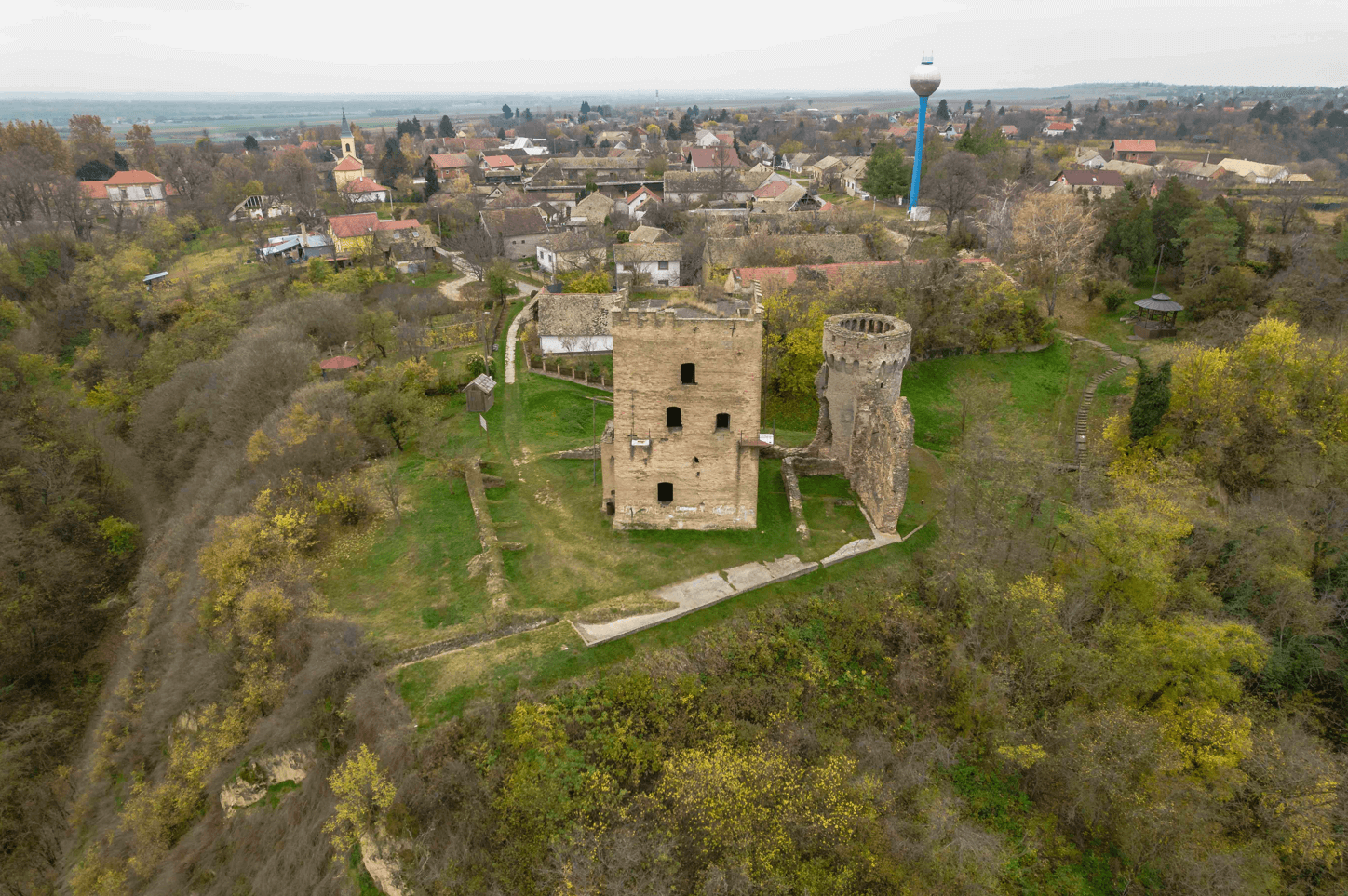
A mysterious medieval-looking castle stands on the bank of the Danube. There is no written information on its origins, but there are a few legends surrounding it. Each generation probably comes up with its own stories. Nada Bućkalović wrote about one of them where fairies would keep destroying at night whatever the builders would build during the day. To get them to stop doing that, they had to sacrifice a breastfeeding mother by building her into one of the pillars of the castle. According to Nada, the memories of the legend were refreshed when the grave in the basement was robbed. The pillar at the entrance was damaged, revealing a 180 cm tall skeleton, with a 150 cm long braid. Nowadays, the castle is a zero-category monument standing on top of a hill right next to the Danube. Local rock climbing associations like using it for practice, but you don’t have to be an expert to climb up the hill and explore its old walls. The Stairway of Health in the park right next to the castle will also take you up and down for a refreshing walk by the Danube.
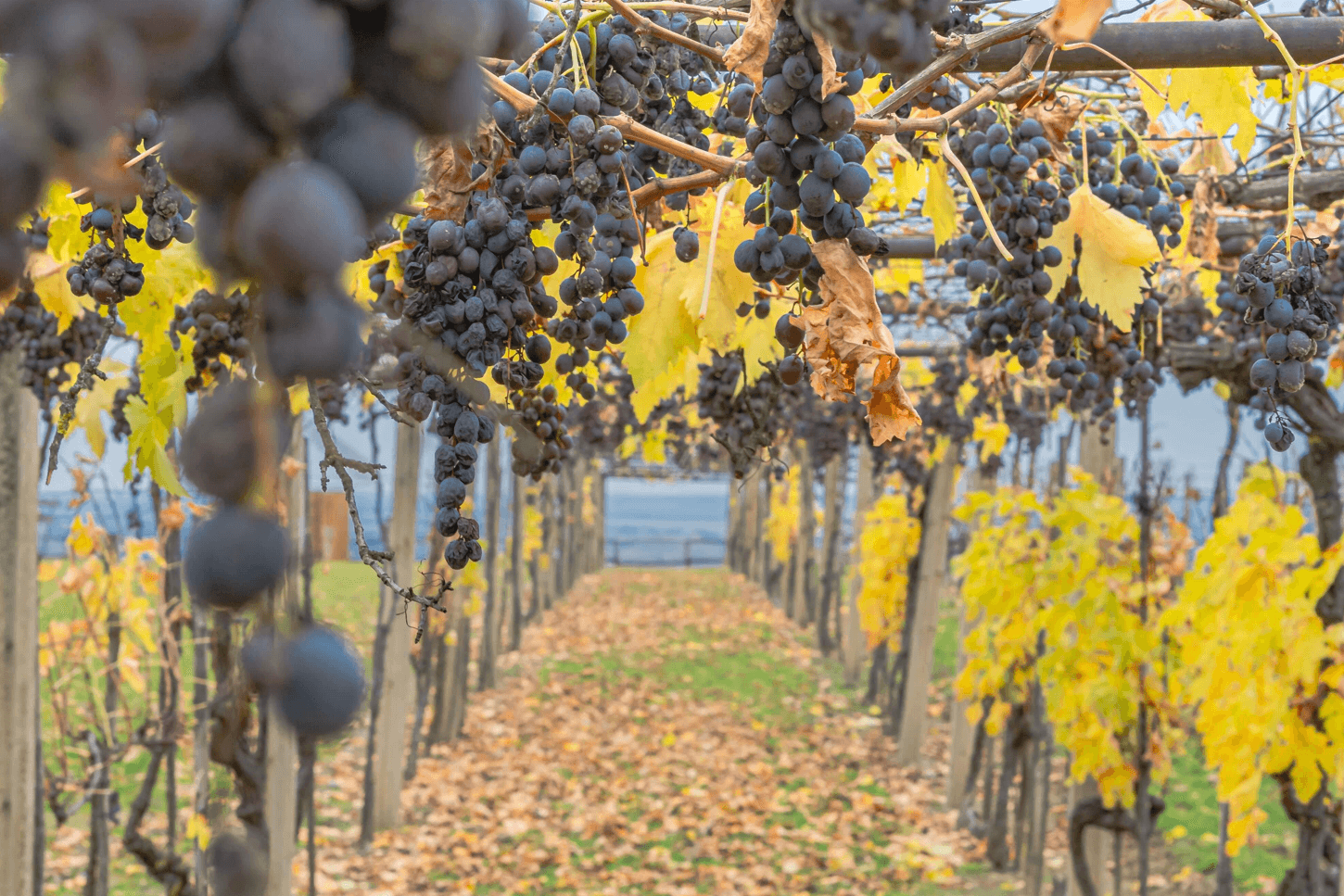
Having touched on movement, this is the perfect opportunity to remind you of Erdut’s traditional Wine & Bike Tour. Usually taking place right in the middle of autumn grape harvests, this event attracts hundreds of visitors each year, all looking for good fun, healthy competition, and, of course, excellent local wine. Thanks to its geographical position, the Erdut municipality is famous for its vineyards, which stretch as far as the eye can see.
Erdut alone is home to multiple wineries, harvesting the famous Traminac, Graševina, Chardonnay, Riesling, etc. Graševina is the trademark wine of Erdut, and there is so much of it there that they had to build the world’s largest barrel to keep it all.
An incredible 2,5 tonnes of iron keeps the wooden construction in place. It has been listed in the Guinness Book of World Records, and it can keep 75 thousand litres of wine, equaling 100 thousand bottles! It was made in 1989 by DIK Đurđenovac, using the traditional method of construction with a total of 109 oak trunks which were by that point over 100 years old. The motifs of the traditional Croatian interlace and the Last Supper were carved by Naïve sculptors Tijardović and Fodor. The barrel has been kept full of Graševina ever since its construction. Not that its integrity is ever to be doubted, but it has been placed over a specially constructed pool that would salvage the gold-coloured nectar of life in case the barrel ever started leaking.
A day of sightseeing, cycling, walking, and wine tasting will surely make you quite hungry. Worry not! Though there is no restaurant in Erdut, the locals will be more than happy to feed you homegrown and homemade local food full of flavour, protein and healthy* fat, vitamins, and all the other nutrients your body and soul might need. One of them is teta Zlatica.
She is the perfect representative of what happens when you’re born and raised in a place like Erdut. Like many others in Slavonia, her family has faced all kinds of adversity during the Homeland war, and was left without a penny or a house. After going off into the world and becoming and successfully running a couple of businesses, her heart eventually took her back to Erdut to rebuild her family home and live off the land on the picturesque hills. She has decided to leave everything else and do what she does best and enjoys the most – open her home, her kitchen, and her heart to the curious wanderers who come to explore and experience Erdut. She is one of the residents in Erdut whose happiness is contagious. They all work together, driving change and inspiring progress. It is this synergy (along with their wine) that we believe will get them far and make you feel right at home.
She runs Etno Kuća Stari Dud, where she provides accommodation and freshly cooked meals. If you visit at the right time, live traditional music nights might spontaneously happen. So far, she has hosted team buildings, theatre groups, and events like birthdays and christenings. If you would like to give her a visit, e-mail This email address is being protected from spambots. You need JavaScript enabled to view it. and we’ll sort you out in no time.
*might not always be extremely healthy
Photos: Steve Tsentserentsky
How good is your knowledge of eastern Croatia? Take the CROMADS test above - how many places do you recognise?
For more, make sure to check out our dedicated Lifestyle section.
EuroBasket: Croatia Sees Light and Shadow Against Estonia and Italy
September 6, 2022 - Croatia barely pulled off a 73-70 victory against Estonia yesterday but tonight's 81-76 (42-34) loss to host Italy in game four makes elimination very likely. The checkered team now need a clear victory against second-placed Ukraine on Thursday during the last group game in order to take place two or three and reach the Round of 16.

After starting the tournament with two good games (a close loss to favored Greece, a clear win against Great Britain) the Croatian national basketball team almost surprisingly lost its third game in Milan against Estonia. The reason for Estonia falling short was a perfect game by Karlo Matković who made all of his 8 attempts from the field and a bonus free throw for 17 points, 4 rebounds and 2 steals in just under 19 minutes on the court.

In tonight's game against Italy, coach Mulaomerović's team had a chance to qualify early for the Round of 16 in Berlin but the hosts were facing elimination with only a single victory against Estonia and came prepared for a fight. Bogdanović's 27 points were not enough to make a difference.
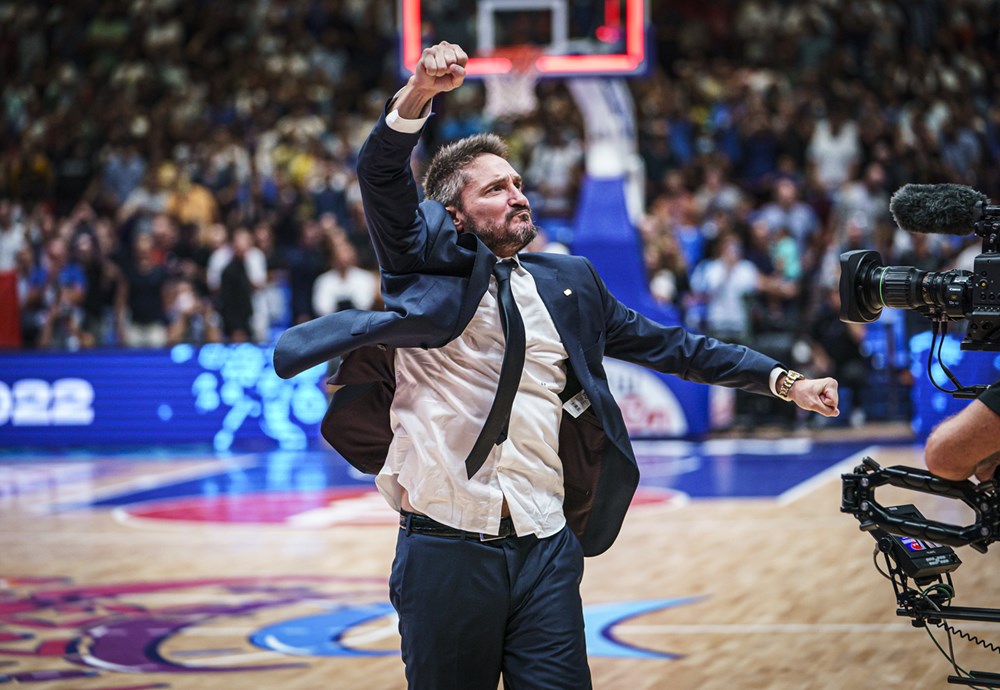
Italian coach Gianmarco Pozzecco saw his team take the first half 42:34 before Croatia came back with a strong run at the beginning of the third quarter. The game turned into an open fight with changing leads for almost all of the remaining 15 minutes before Italy, led by Melli's and Fontecchio's 19 points each, edged away and managed to maintain the lead during the last two minutes.
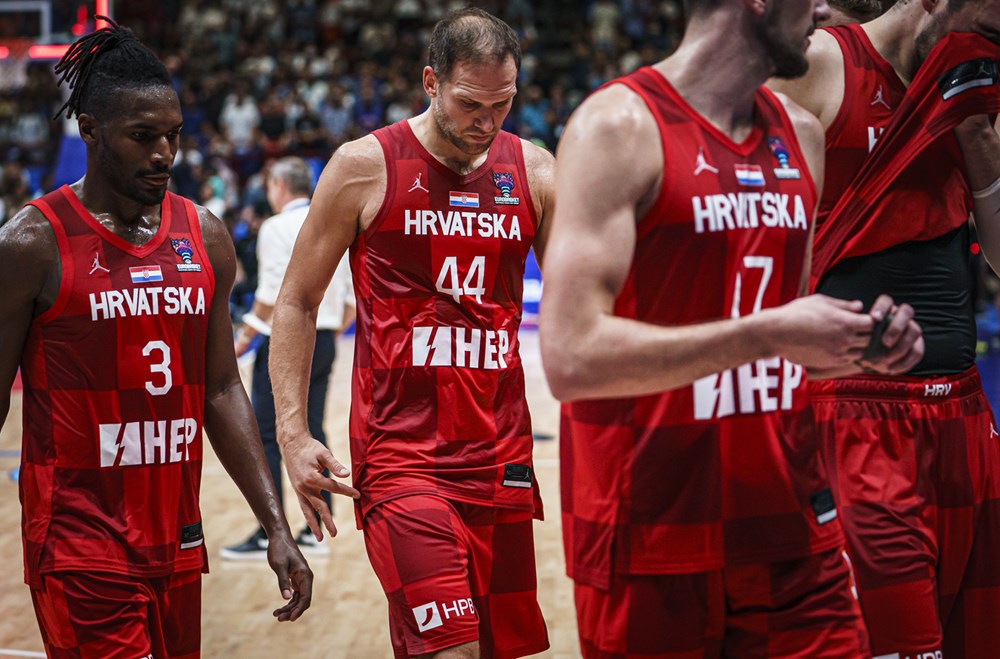
Results by quarters:
CRO - EST
20-16, 13-13, 20-19, 20-22
ITA-CRO
22-17, 20-17, 13-25, 26-17
Box score
Dinamo Shocks Chelsea in Zagreb to Kick Off Champions League Campaign
September 6, 2022 - Dinamo beat Chelsea 1-0 in the first round of the Champions League Group E at Maksimir Stadium in front of 20,607 spectators.
Dinamo Zagreb opened their eighth appearance in the Champions League group stage at Maksimir stadium with a victory against former European and English champions Chelsea. The deciding goal was scored by Mislav Oršić in the 13th minute.
Chelsea won direct placement in the Champions League after finishing third place in the Premier League last season. The Croatian champion played three qualifying rounds to secure a place among the European football elite. They clinched a spot in the group stage after beating Bodo/Glimt.
Chelsea took the initiative from the first minute, but it didn't take long for Dinamo to answer back. In the 13th minute, Dinamo countered and converted the attack into a goal by Mislav Oršić.
The action started with Robert Ljubičić, who sent a long ball to Bruno Petković. Bruno passed it to Oršić, who dribbled past Wesley Fofana, a new Chelsea player who arrived from Leicester City for 82 million euros. Oršić ran about 50 meters and beat goalkeeper Kepa for 1:0!
Chelsea equalized in the 48th minute, but Aubameyang's goal was ultimately called offside. In the 56th minute, Dinamo was one step closer to a second goal, but Stefan Ristovski's fantastic shot hit the crossbar.
Reece James also hit the post in the 85th minute. Mateo Kovačić played for Chelsea until the 59th minute.
RB Salzburg and Milan meet in the second match from this group at 21:00.
Dinamo plays their next Champions League match on Wednesday, September 14, at San Siro against Milan.
Lineups
DINAMO: Livaković - Ristovski, Perić, J. Šutalo - Moharrami, Mišić, Ademi, Ljubičić - Ivanušec - Petković, Oršić
CHELSEA: Arrizabalaga - Azpilicueta, Koulibaly, Fofana - James, Kovačić, Mount, Chilwell - Havertz, Sterling - Aubameyang
To follow the latest sports news in Croatia, follow TCN's dedicated page.
Croatia Crush Georgia for Spot in European Championship Semifinals!
September 6, 2022 - The Croatia men's water polo team has secured a spot in the European Championship semifinals!
The Croatia men's water polo team met Georgia in the quarter-final match of the European Championships in Split on Tuesday.
The winner of the match will play in the semi-finals against Italy, who beat France 16:8 in the quarter-finals.
Croatia did not reach the quarterfinals easily. They lost the first half to both France and Greece in the group stage and failed to score against Greece in the first 16 minutes of the match. However, a draw against Greece was enough for Croatia to win first place in their group with seven points.
Georgia beat the Netherlands 12:8 (2:3, 5:1, 2:2, 3:2) in the round of 16. Croatia last played Georgia a little over two months ago at the World Championships in Budapest and won 13:7 in the round of 16.
Match report
1st Quarter
Croatia won the swim-off and the first attack of the match but lost the ball to Georgia. Georgia hit the post in their first attack. Croatia won a penalty with 6:09 on the clock. Kharkov scored for 1:0 Croatia. Bijac saved Georgia's next attack. Croatia's next attack resulted in another penalty which Kharkov scored again for 2:0! Bijac kept the goal clean in Georgia's next attack, and Fatovic scored for 3:0 with 3:39 left. Zuvela made it 4:0 with 6 seconds on the clock, which is how the first quarter ended.
2nd Quarter
Croatia won the swim-off but didn't score in their first attack. Georgia scored for 4:1 with 7:09 on the clock. Georgia hit the post in the next attack but scored for 4:2 with 5:22 to go. Buric scored for 5:2 with 4:48 left. Bijac was solid in goal to deny Georgia’s next attacks. Kharkov made it 6:2 with 1:19 to go. Georgia won a penalty with 52 seconds but hit the post. Croatia hit the post in their next attack.
3rd Quarter
Croatia won the swim-off again and the first attack of the 3rd quarter. Basic nailed the back of the net for 7:2 with 7:30 on the clock. Georgia answered back in their next attack for 7:3 with 7:02 to go. Bukic made it 8:3 for Croatia with 6:32 left. Fatovic scored a penalty for 9:3 with 5:49 left. Bijac saved a Georgia penalty with 5:20 on the clock. Nothing was getting past Bijac in this match. Fatovic had a one-on-one and faked the Georgia keeper for 10:3 with 3 minutes left! Bukic made it 11:3 with 1:29 to go in the third quarter - and 12:3 with 42 seconds left.
4th Quarter
Popadic replaced Bijac in goal for the final quarter. Georgia got the swim-off in the final quarter of the match. Georgia made it 12:4 with 7:17 to go in the match. Buric answered back with a goal for 13:4. Croatia called a time-out with 4:21 to go. Bukic scored for 14:4 with 2:24 left. Georgia scored for 14:5 with 1:45 on the clock. Kragic made it 15:5 with 42 seconds left. Croatia had the final attack and ran out the clock. The match ended 15:5!
Croatia and Italy will meet in the semi-final on Thursday in Split!
To follow the latest sports news in Croatia, follow TCN's dedicated page.


